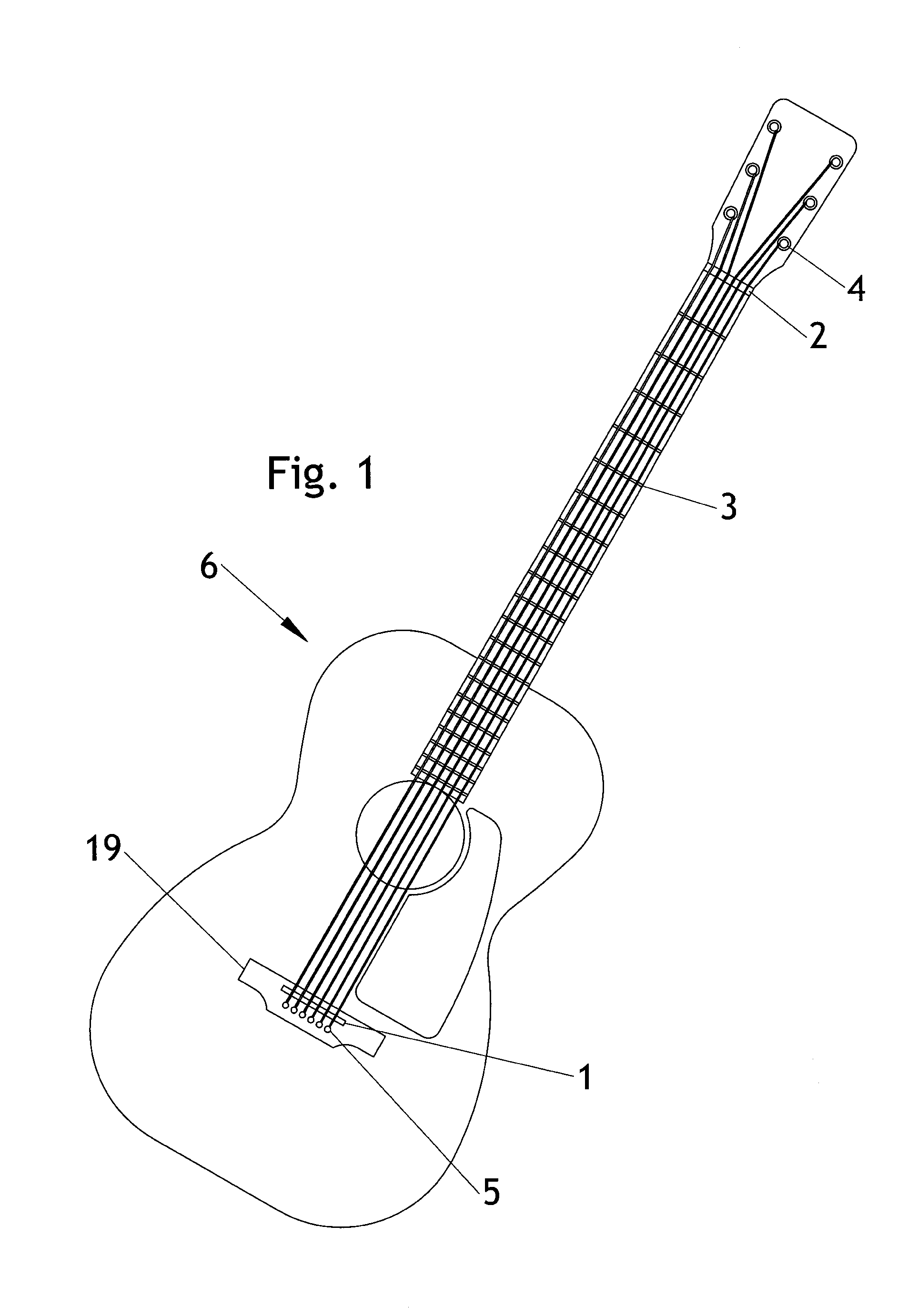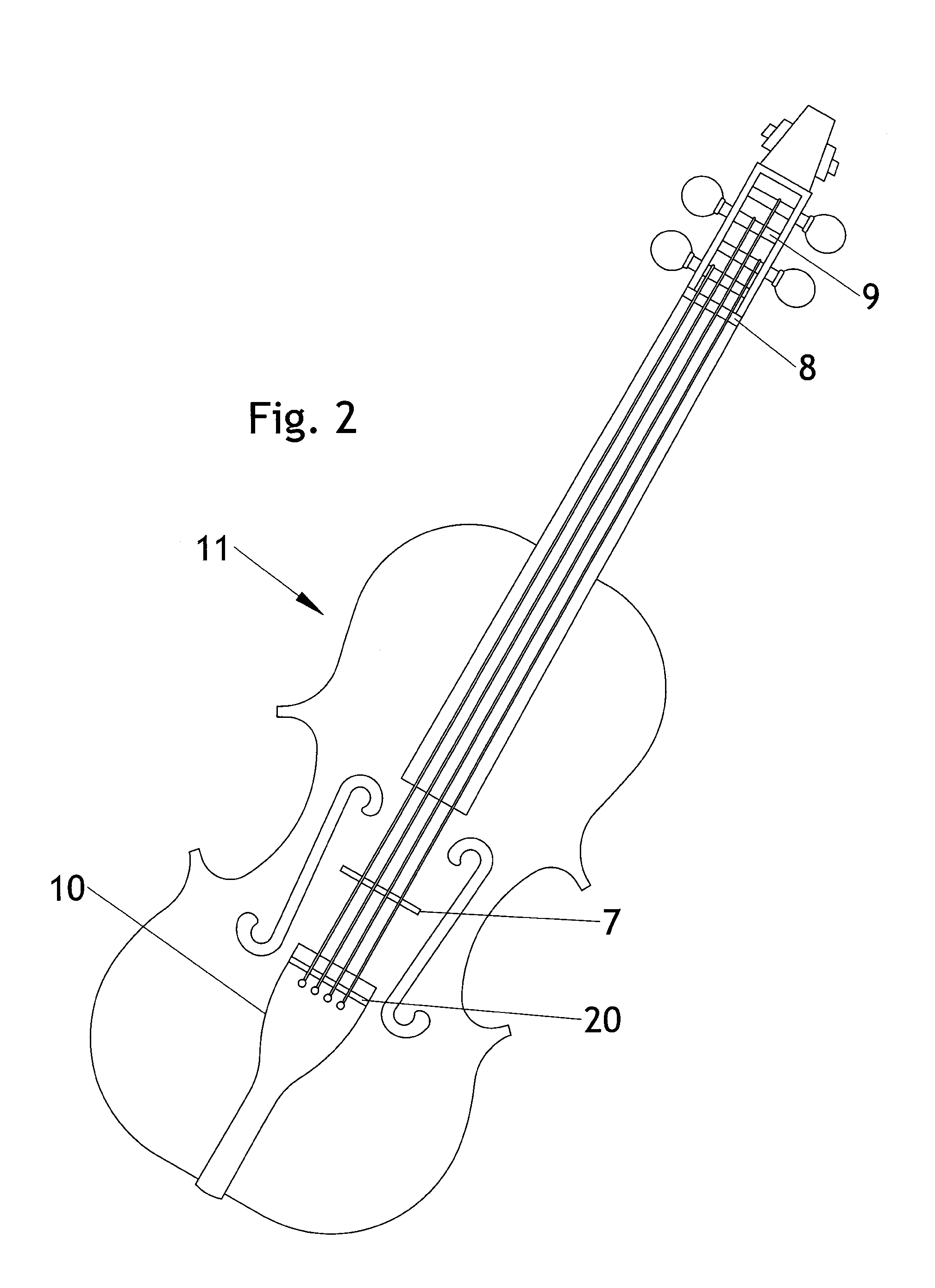Pyrolytic carbon components for stringed instruments
a technology of pyrolysis carbon and components, applied in the field of pyrolysis carbon components for stringed instruments, can solve the problems of less than desired, becoming increasingly rare and/or expensive, etc., and achieve the effects of less muddy sound, clearer sound, and marked difference in the sound of stringed instruments
- Summary
- Abstract
- Description
- Claims
- Application Information
AI Technical Summary
Benefits of technology
Problems solved by technology
Method used
Image
Examples
Embodiment Construction
[0030]The invention employs previously unused materials for components that come in contact with strings on stringed instruments; also disclosed is the concept of processing to shape these components to sizes just greater than maximum component size specification in order that they may then be custom fit, as desired, to accommodate tolerances of a particular instrument. The invention is hereinafter described by reference to families of components that come in contact with strings on stringed instruments.
[0031]Components such as saddles, bridges and nuts for acoustic guitars, banjos, mandolins, ukuleles, lyres, etc., along with those for violins, violas, cellos, string bass, etc., are preferably made by applying a structural coating of pyrolytic carbon over a high density, isotropic graphite substrate of suitable size and shape. In certain preferred embodiments, the outer geometric envelope of the component is pre-shaped to provide a suitable “blank” using lapping, grinding or sandin...
PUM
 Login to View More
Login to View More Abstract
Description
Claims
Application Information
 Login to View More
Login to View More - R&D
- Intellectual Property
- Life Sciences
- Materials
- Tech Scout
- Unparalleled Data Quality
- Higher Quality Content
- 60% Fewer Hallucinations
Browse by: Latest US Patents, China's latest patents, Technical Efficacy Thesaurus, Application Domain, Technology Topic, Popular Technical Reports.
© 2025 PatSnap. All rights reserved.Legal|Privacy policy|Modern Slavery Act Transparency Statement|Sitemap|About US| Contact US: help@patsnap.com



